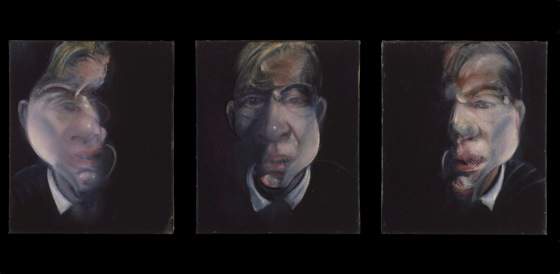Francis Bacon: five decades
This retrospective surveys Bacon's life and work to help audiences understand his fascination with the human body and unwitting radicalisation of 20th-century art.
Overview
"I always think of myself not so much as a painter but as a medium for accident and change," said Francis Bacon, one of the most studied figures in post-war British art. A painter whose work meditates on sensations of a debilitating painful human condition, Bacon's work centralises an intensely emotive self. Francis Bacon: five decades is the first major retrospective in Australia of rare works including some 50 paintings drawn from 37 international collections, source material from Bacon's studio and documentary film. The retrospective surveys the life and work of Bacon to liberalise the way audiences understand the artist's deeply personal fascination with the human body and unwitting radicalisation of 20th-century art.
In the 1940s most of Bacon's work stablised on the theme of entrapment: offering poignant renditions of power struggles between the self and violently intense human emotion. Embodied by visions of screaming figures in cubic and cage-like structures, the artist's might to immobilise viewers through sadistic undertones is immediately striking. A study for a figure at the base of a crucifixion is one work from an early Bacon triptych that resonates with the artist's interest in the sensation of feeling. A headless anthropomorphic figure whose mouth is gasping for air is projected against visceral orange-red, and instead of attempting to decode what the artist himself felt, viewers become increasingly preoccupied with their own emotional reaction to the disturbing work.
Conquered by experimentation with subject matter and technique, the works produced by Bacon in the 1950s saw the figure become progressively isolated. Untitled – Half length figure in sea invites viewers to acknowledge human detachment from a modern world and epitomises Bacon's interest in isolation. The torso of a non-descript, but presumably male figure, is almost obliterated by the force of gestural waves that engulf him. Of particular interest to this work is the fact that themes of bathers and the ocean have strong reverberation in the art-historical cannon, but do not feature as key in Bacon's body of work. Both the position of the work across Bacon's career, and the subject matter within the work, represent isolation in the extreme.
In the 1960s, Bacon's compositions became more daring, drawing on the circumstances of life, his lovers and close friends. The retrospective's most recognisable work from this decade is From Muybridge 'The human figure in motion: woman emptying a bowl of water/paralytic child walking on all fours'. Referenced in the work's title, Eadweard Muybridge was an English photographer known for pioneering motion series, and a figure whose photographic sequences repeatedly inspired Bacon's work. Ode to Bacon's obsession with collecting visual information, From Muybridge highlights the artist's fondness of working from photographic material over using live sitters.
Many who know Bacon's work will know that the 1970s were a time where monumental triptychs reigned king, memorialising the artist's lover George Dwyer. The death of Dwyer, in a hotel room from an overdose, on the eve of Bacon's retrospective at Paris' Grand Palais is the subject of much of the artist's work from the '70s until his death. Moving forward into the '80s, Bacon's work seemed to pulsate around metrics of truth and honesty over idealised beauty. Interestingly, though, the artist's Portrait of John Edwards moves further beyond reality by rejecting the biology of human form. It is said that this portrait fuses the body of George Dwyer and head of John Edwards, the artist's closest friend in later life, in an effort to memorialise two of Bacon's most cherished companions. The chaos and drama found in Bacon's earlier work has been replaced by sober control realised by the sensual and tender treatment the artist has afforded his subject.
"We are born and we die but in between we give this purposeless existence a meaning by our drives." And meaning he has given us. Francis Bacon was a prolific painter of people, of personal suffering and of his subject's existence in the depths of their own emotive holdings. Bacon's work is extraordinarily far reaching without any illusion of narrative; viewers must piece together the artist's distortion and fragmentation of human form themselves to make sense of his work. Unlike individual works, Francis Bacon: five decades connects the artist's private musings with their explosions into his art to offer a perfectly cohesive story about the sensations of the human condition.
Image: Three Studies for a Self Portrait by Francis Bacon. © The Estate of Francis Bacon





